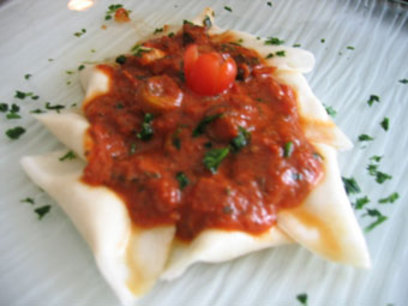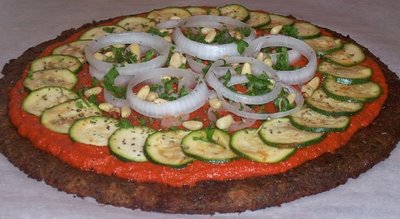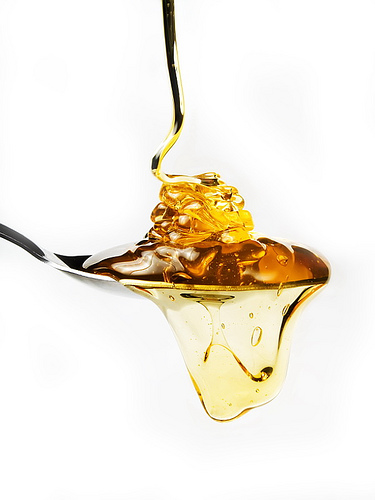Barley Pizza Crust
2 Cups Sprouted Barley
1 1/4 Cup ground Flax Seeds
1/2 Cup Leek (Onion would work too)
2 Celery Stalks
1 Carrot
1 Large Tomato
2 Large Cloves of Garlic
1 tsp Sea Salt
1/2 Cup Water
I mixed the ingredients in the food processor and spread the batter in small circles on teflex sheets. (If you prefer, you could make a couple of large pizza crusts instead.) I dehydrated at 115 for a couple of hours, turned the crusts onto the mesh, then dehydrated at 105 for another 6 hours or so. Yummo!

Carmella’s Notes:
Alissa suggests that you soak the barley (unhulled as pearled barley won’t sprout!) for 6 hours, then let it sprout for a day or so, rinsing often, until the tail is just starting to peek out. For more info on how to sprout barley, go to this site.
For a delicious variation, you can also substitute barley for sprouted buckwheat.



